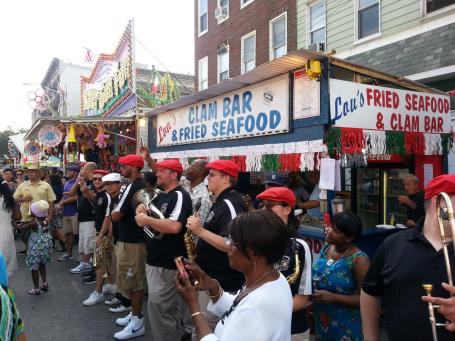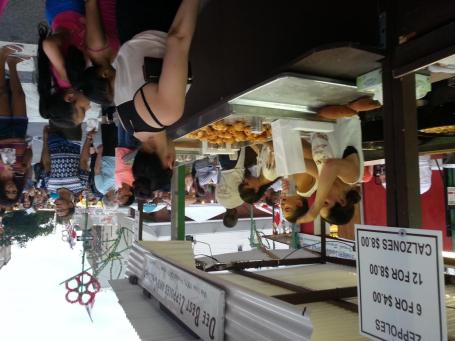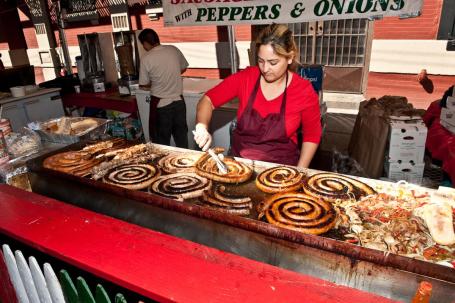Robert A. Orsi, The Madonna of 115th Street: Faith and Community in Italian Harlem, 1880-1950 (1985), Chapters 1 and 5
Recent ethnographic studies of Catholic communities are famous for their sensuous descriptions. I felt that it was important for my students to grasp why authors like Robert Orsi and Rebecca Lester spoke at length about food, clothes, weather, streets, beds, and buildings. I struggled with figuring out how to invite my students into a conversation about this aspect of Catholic life. In the end, I found a solution that did the trick, but I still wonder if there are better ways to convey the theoretical and empirical importance of sensuousness as a medium for cultures and Catholic practice.
My solution was to place two passages from our assigned readings side-by-side on a slide, which I threw up onto the screen in front of the classroom. I then had student volunteers read the passages aloud. The left-hand side passage was from Orsi’s The Madonna of 115th Street. It begins: “The most characteristic sensuous facts of the Mount Carmel festa were the smell and taste of food” (4). The description includes a long list of what people ate and drank. It includes evocative details like, “From the street vendors the devout could buy beans boiled in oil and red pepper…” And it conveys the politics of eating in a closing statement, “Beer and wine were drunk, to the horror of those who came from New York’s better neighborhoods…”
In the introduction to her study of the religious formation of a group of Catholic nuns, Jesus in Our Wombs, Rebecca Lester writes, “At 4:45 a.m. the Grand Silence is compromised as eighteen sleepy young nuns tumble from their beds to recite the rising prayer in the cold darkness of the convent dormitory” (1-2). Lester goes on to talk about the nuns’ “bare feet” that “pad across the cold stone floor.” She mentions how “arms and legs are scrubbed.” And she describes the ritualized actions of getting dressed and making other preparations for the day that are interspersed with recited prayers and imbued with a sense of meditative concentration.
The initial question I asked my students was, Why did these authors talk about these “sensuous” details? This question was, I think, too abstract; it was also too leading, reflecting a pitfall that I have fallen into on several occasions as a beginning teacher of Global Catholicism: structuring class discussions as a question and answer session in which students have to “guess what the professor is thinking,” rather than discovering for themselves what was interesting about the text.
During our conversation in class, I pointed out that putting these descriptions at the beginning of their books signaled something. The authors wanted their readers to take notice of these passages. Why? My students responded by saying that both authors felt that Catholics’ bodies were important. This was a general observation, but one that was on the mark. One student mentioned something we had talked about a few weeks before in our unit on Charismatic Catholicism: Charismatic Catholics pray with their hands up in the air. She compared it to the way she learned to hold hands with people during the Lord’s Prayer. A friend, in contrast, had mentioned that she didn’t grow up doing this; the friend remembered being surprised the first time someone reached over to hold hands. I was glad for the student’s ability to see how sensuousness might have played a role in her own practice of Catholicism. In general, I had hoped to use this discussion to get at a basic idea at the heart of the Catholics & Cultures program’s approach to teaching Global Catholicism: the “practical activity” the initiative identifies with lived Catholicism includes seemingly non-Catholic activities like putting on clothes and eating food; students’ knowledge of Catholicism can be enriched by learning to see these activities not only as Catholic, but also as cultural.


